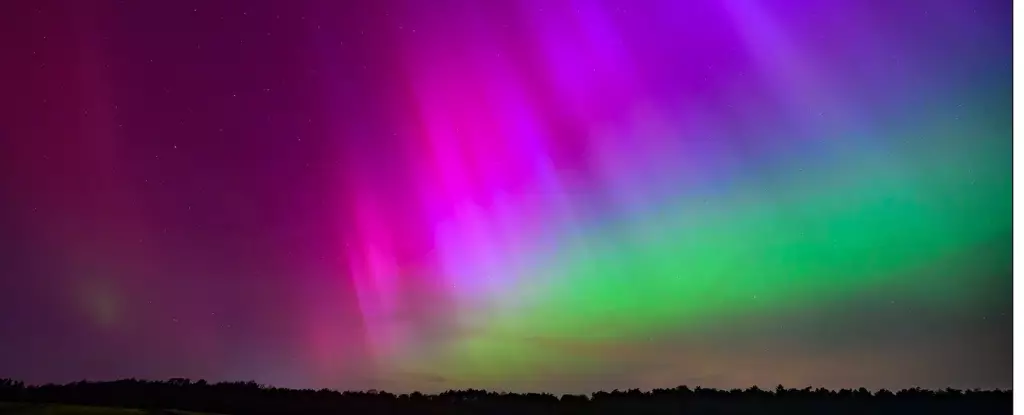Last week, the world witnessed a stunning display of aurora lights as a result of a massive solar flare. These colorful lights painted the sky in both hemispheres, reaching as far south as Hawaii and as far north as Mackay. While the rare and mesmerizing spectacle has now ended, it is important to understand the science behind these captivating lights to truly appreciate their beauty.
The Role of Charged Particles
The auroras are caused by charged subatomic particles, primarily electrons, colliding with Earth’s atmosphere. These particles are constantly emitted from the Sun, with a higher concentration during periods of heightened solar activity. While Earth’s magnetic field shields most of the atmosphere from these particles, they can penetrate near the poles, leading to the creation of auroras.
The Chemistry of Light
When high-speed electrons collide with oxygen molecules in the upper atmosphere, they split the molecules into individual atoms. These oxygen atoms, in an excited state, emit light as a way to “relax” by releasing energy. Different elements produce various colors of light when energized, such as blue from copper, green from barium, and yellow-orange from sodium.
The phenomenon of auroras is governed by quantum mechanics, allowing for rapid emissions of light by excited atoms. Despite the fleeting nature of the excited state, nature finds a way for oxygen atoms to emit a dominant green light as they transition from one state to another. This slow process results in the green glow that characterizes auroras.
The Mystique of Forbidden Transitions
An intriguing aspect of auroras is the occurrence of “forbidden” transitions, where electrons make unlikely leaps between orbital patterns within the oxygen atom. This leads to the emission of red light, which appears at high altitudes and in intense auroras. The persistence of the excited state before the emission of red light adds to the mystique of these captivating lights.
A Spectrum of Colors
In addition to green and red, auroras can also display blue and magenta hues, resulting from ionized nitrogen molecules emitting light. While the colors are visible to the naked eye during bright auroras, cameras can capture the intensity of these colors more effectively due to their long exposure capabilities.
Our eyes have limitations when it comes to perceiving colors in low light conditions, which is why cameras can capture the full spectrum of auroral colors more vividly. However, when the aurora is bright enough, these enchanting colors become clearly visible to the naked eye, offering a breathtaking sight to those fortunate enough to witness them.
The science behind auroras sheds light on the captivating interplay of charged particles, excited atoms, and quantum phenomena that create these celestial light shows. Understanding the intricate chemistry and physics behind auroras adds a deeper layer of appreciation to the stunning natural spectacle that graces our skies during periods of heightened solar activity.


Leave a Reply